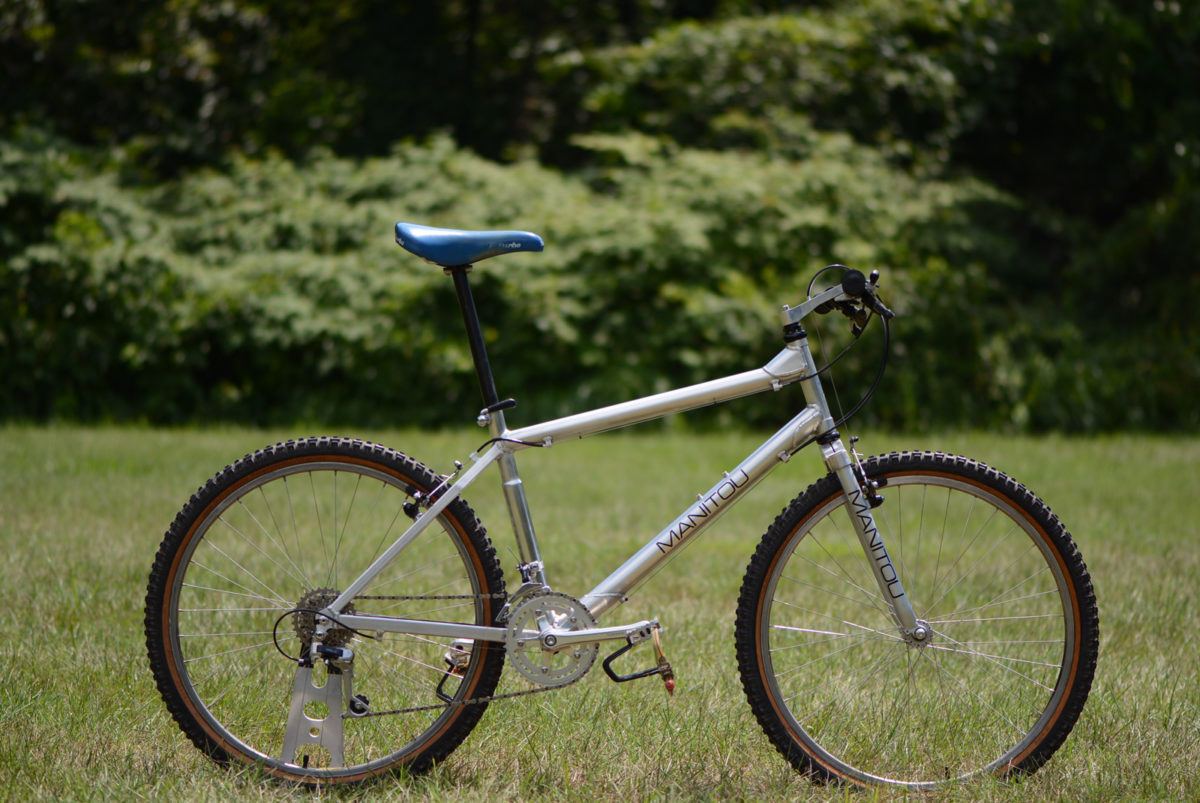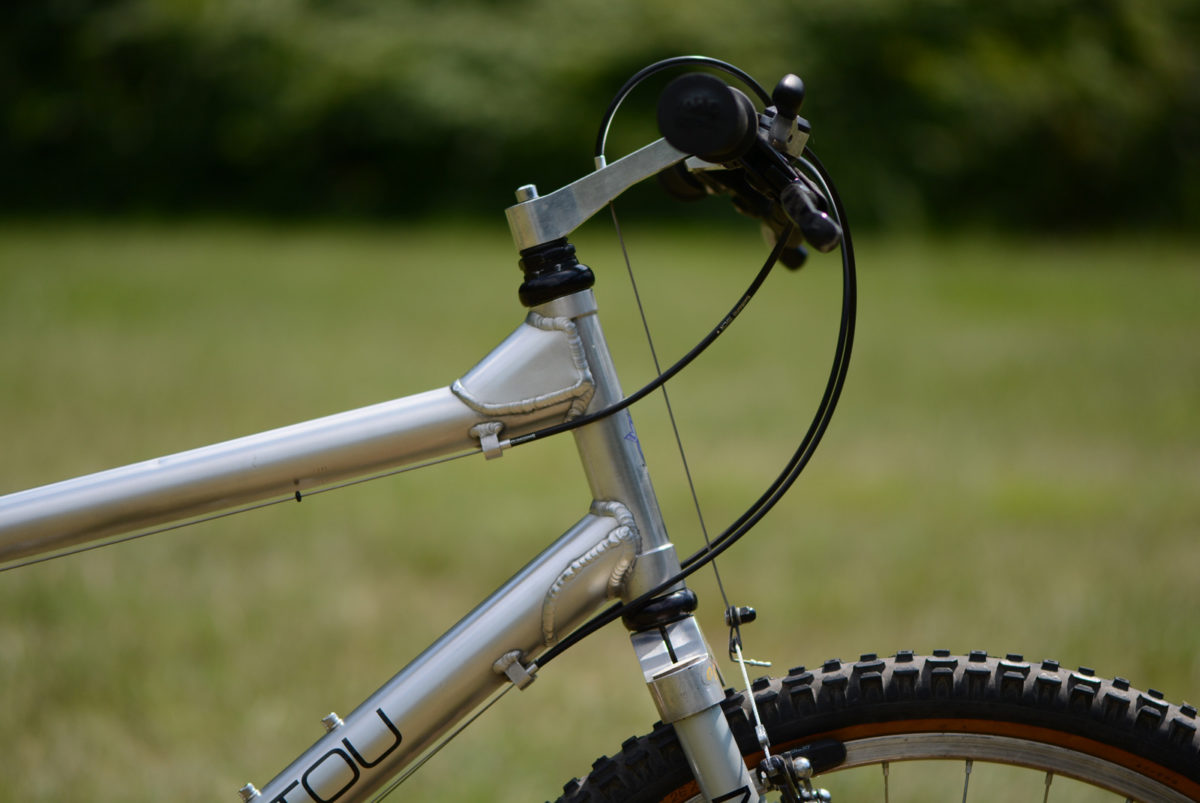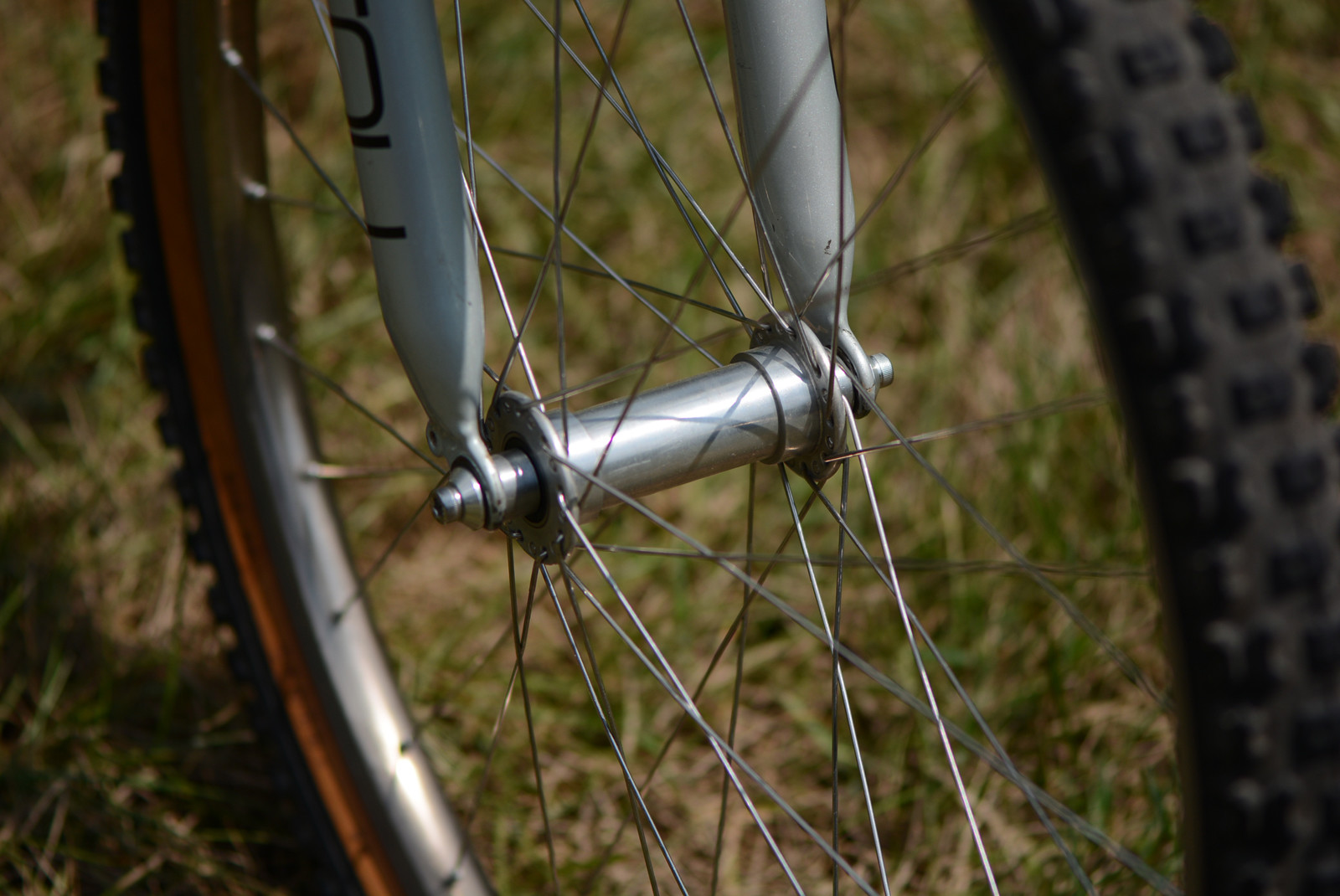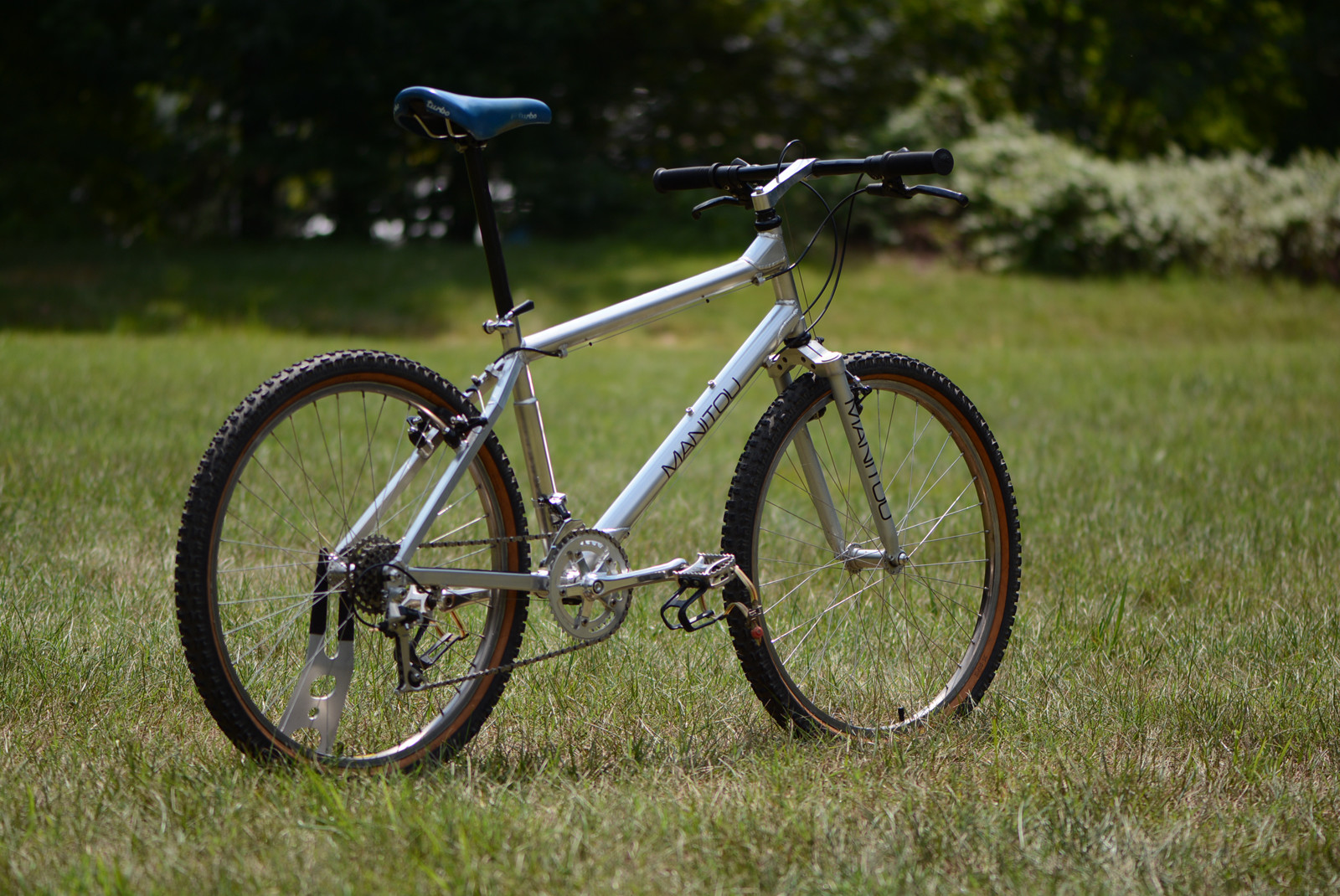
This particular bike was built around 1988, probably the later part of the year. Doug started making bikes for customers in 1987 and only made 24 bikes that year and another 27 in 1988. During that time he experimented with different tubing, gusset design and methods of joining the rear and front triangles. The earliest bikes had a chaninstay designed that strongly resembled the Mountain Klein and which looked like a combination of two flat U shaped sections welded into a single piece which joined the bottom bracket shell and then mates to the chainstays. This bike is the next iteration of that concept which uses box sections to form the chainstays and then welds directly onto the bottom bracket shell.
Of the obvious evolving elements that can be seen on the early Manitous is the transition to a larger seat tube. The earliest bikes had a constant diameter 1 1/4″ seat tube which over time transitioned to 1 1/2″. If you put a select few 1988/89 Manitous in line you could see that 1 1/5″ tube almost growing up from the bottom bracket until it spanned the entire seat tube with a necked down portion above the top tube to accommodate the 26.8mm post as the larger 31.6mm posts used in later bikes were not yet available.

These seat tube transitions were at first accomplished by splicing the two different diameter tubes together with a welded junction. These junctions were a stress riser in the frames and a common failure point. This frame had a minor crack at this junction which was expertly repaired by FTW.


Though crude at first glance this design is nothing but efficient and appropriate for the task it was meant to perform. There are no flourishes and not much in the way of elegance, the welds are on the rough side. All of that however doesn’t do anything to diminish the way these bikes look and more importantly they way they ride. By the time this and the later bikes were made they were much more than trials bike and turned into very capable mountain bikes. Their roots were still in technical riding, but Doug’s experience over the years resulted in a well rounded design that could tackle most terrain with light footed surety.
Although the hubs appear to be widened Bullsyes they were actually hand made by Doug and his crew especially for his bikes. The common setup on these bikes was 28h in the front and 32h in the rear. The wide hubs made for stronger wheels and enabled even heavier riders to comfortably use lower spoke counts without sacrificing strength and durability.
These bikes are really pretty amazing pieces of mountain bike history. They represent a spirit of freedom and adventure, and are built with a degree of performance that enabled the lucky few who had a chance to buy one access to the outdoors and to ability to partake in that adventure. Personally the Bradbury Manitou is one of my favorite bikes and I consider myself infinitely lucky to have found one in my size and appreciate each and every outing I have on it.
Completed Projects:
Current Projects:
Newsletter sign up:
Subscribe to our newsletter to receive info on our latest projects and new podcast releases









